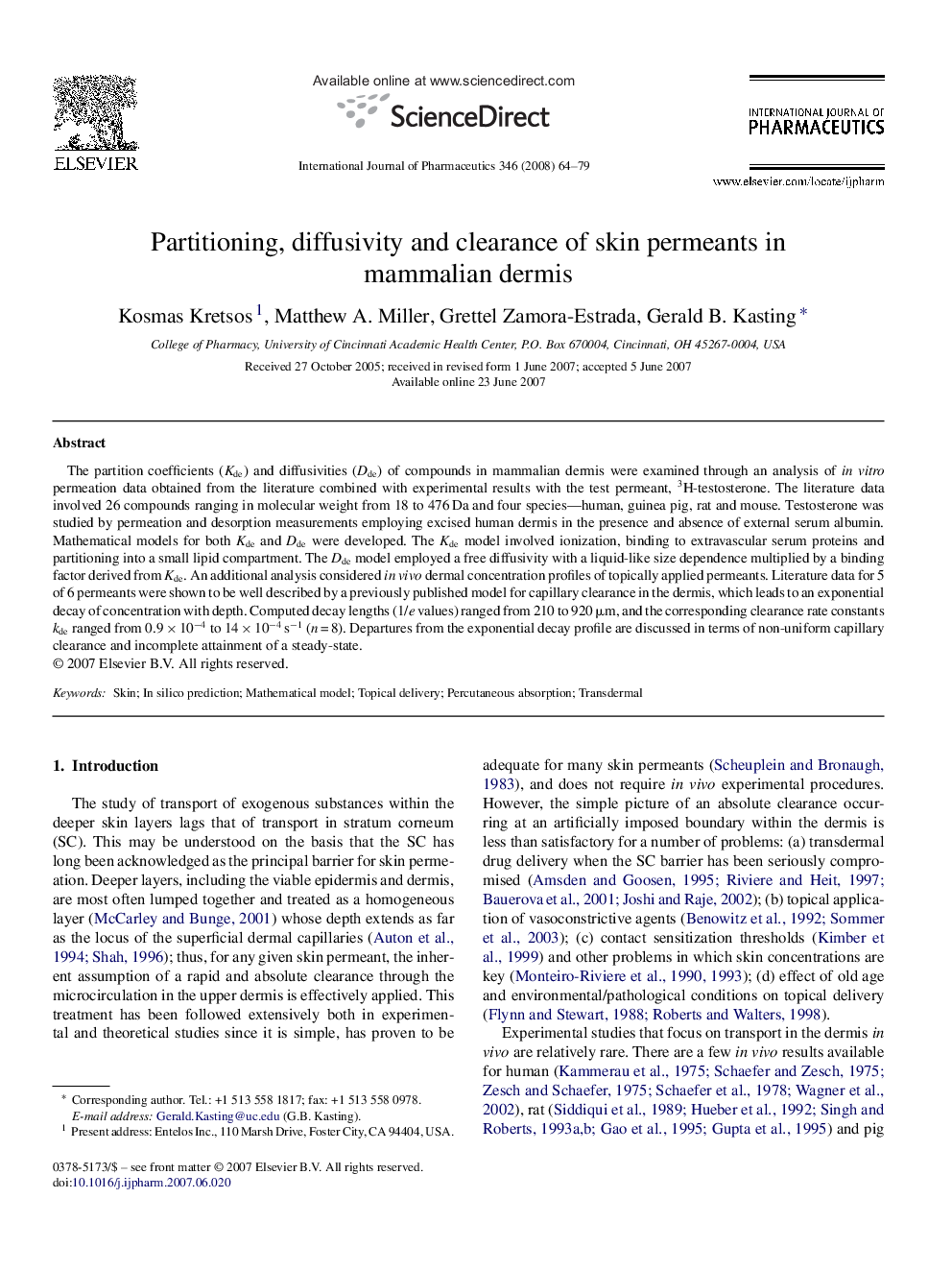| Article ID | Journal | Published Year | Pages | File Type |
|---|---|---|---|---|
| 2505978 | International Journal of Pharmaceutics | 2008 | 16 Pages |
The partition coefficients (Kde) and diffusivities (Dde) of compounds in mammalian dermis were examined through an analysis of in vitro permeation data obtained from the literature combined with experimental results with the test permeant, 3H-testosterone. The literature data involved 26 compounds ranging in molecular weight from 18 to 476 Da and four species—human, guinea pig, rat and mouse. Testosterone was studied by permeation and desorption measurements employing excised human dermis in the presence and absence of external serum albumin. Mathematical models for both Kde and Dde were developed. The Kde model involved ionization, binding to extravascular serum proteins and partitioning into a small lipid compartment. The Dde model employed a free diffusivity with a liquid-like size dependence multiplied by a binding factor derived from Kde. An additional analysis considered in vivo dermal concentration profiles of topically applied permeants. Literature data for 5 of 6 permeants were shown to be well described by a previously published model for capillary clearance in the dermis, which leads to an exponential decay of concentration with depth. Computed decay lengths (1/e values) ranged from 210 to 920 μm, and the corresponding clearance rate constants kde ranged from 0.9 × 10−4 to 14 × 10−4 s−1 (n = 8). Departures from the exponential decay profile are discussed in terms of non-uniform capillary clearance and incomplete attainment of a steady-state.
